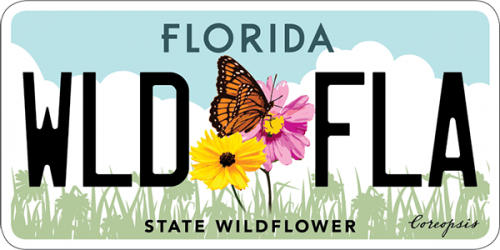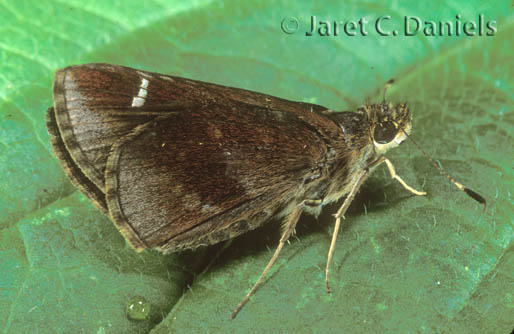- Family name: Hesperiidae/Skippers
- General description: Wings dark brown forewing with small white forewing spots. Ventral hindwing brown with darker central band and purplish-gray frosting along outer margin.
- Field Marks: Dark brown; Ventral hindwing with darker central band and purplish-gray frosting along outer margin.
- Sexes: Appear similar
- Wingspan: 34-44 mm
- Life Cycle: Egg: White, laid singly on host leaves Mature larva: Greenish-white with darker longitudinal stripes.. Head white with three dark lines. Chrysalis: Green with a short point off the head.
- Number of Generations: Three or more
- Flight Season: All year
- Abundance: common
- Habitat: Woodland margins, stream corridors, swamps, moist meadows, roadsides, disturbed sites, old fields, gardens
- Larval Host Plants: Various grasses (Poaceae) including Indian Woodoats (Chasmanthium latifolium), Florida Paspalum (Paspalum floridanum), and Eastern Gamagrass (Tripsacm dactyloides).
- Similar Species:
- Additional Information: Range is limited in Arizona.
- Range in Florida
 The Florida Wildflowers & Butterflies projects at the Florida Museum are sponsored in part by the State of Florida and the Florida Wildflower Foundation, Inc.
The Florida Wildflowers & Butterflies projects at the Florida Museum are sponsored in part by the State of Florida and the Florida Wildflower Foundation, Inc.
